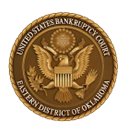Garnishment Procedures:
The Judgment Debtor is the person whose wages or assets are being garnished. The Garnishor is a person who garnishes. The garnishee is the employer or party who hold the wages or assets owned by the Judgment Debtor. whose money is garnished.
- The Garnishor should use State Garnishment forms and fill out completely:
- The Garnishor/Plaintiff should file the Garnishment Affidavit using event: Garnishment Affidavit.
- The Garnishor should file Garnishment Summons and attach to the Summons the filed Garnishment Affidavit, the Claim for Exemption and Request for Hearing, Notice of Garnishment and Exemptions, Garnishee's Answer, and Calculation for Garnishment of Earnings using event Request To Issue Garnishment Summons. The following message will be presented: Message: Please browse and attach the garnishment summon and the filed Garnishment Affidavit, the Claim for Exemption and Request for Hearing, Notice of Garnishment and Exemptions, Garnishee's Answer, and Calculation for Garnishment of Earning. The court will issue the summons and file using the event Garnishment Summons Issued. Upon receipt of the Notice of Electronic filing of the issued garnishment summons, the Garnishor should print the issued summons and serve upon the Garnishee.
- The Garnishor should file Proof of service of the summons is 7 days if within the county or 14 days if outside the county. See: #6 Garnishment Summons served.
- If a the Garnishor does not file Proof of Service within the 7 or 14 day requirement the Garnishor must start over. See #6 for Garnishment summons not served.
- After the Garnishment Summons is served or not served, the Garnishor should the Proof of Service using the event Garnishment summons Served or Garnishment Summons Service Unexecuted. The Answer is due 14 days from date of service with payment or 30 days if a continuing wage garnishment
- Garnishee's Answer/Affidavit is filed along with the Receipt of Garnishment Funds or no money is received because the money was sent directly to party.
- Judgment Debtor files a Claim for Exemption and Request for a Hearing using event Claim for Exemption/Request for Hearing.
- The Court will set a hearing upon receipt
- If Answer is filed without money, the Judge will review to see if money was paid directly to garnishor or if the answer alleges no money is due. If payment is tendered with the Answer,
1. The clerk will deposit into the Court Register Checking Account.
2. The clerk will hold funds for at least 10 days to permit claim of exemption but no more than 21 days.
3. Funds may be released pursuant to application by garnish or after 10 days and upon order of the court.
4. If no application is received at the end of the 21 day period the Clerk shall request an order to pay out the funds immediately on the 21st day.
- If no answer is filed the party will need to file a Motion for payment, if an order is desired.
